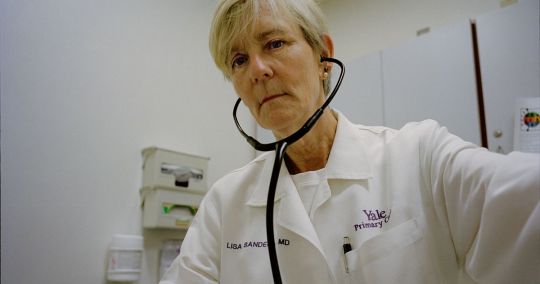#david lyme
Text










Lymegender - A xenogender related to everything David Lyme.
Older stimboard can be viewed here
also thx @bloomics for the david lyme gifs from their female bilyme stimboard, idk but my boi david lyme's live preformances are so stimmy xD
Requests open 24/7!
x/x/x/x/o/x/x/x/x
Read my DNI first!
Banner!
#stim#stimboard#xenogender#green#black#suit stim#shiny espeon#pokemon#david lyme#body stim#slime#bath bomb#bathbomb#pokemon amie#mod rocambole#stimblr#sfw#actually adhd#requests open#xenogender coining#lgbtqia#lgbt#lgbtq
13 notes
·
View notes
Text









female bilymegender for @boba-foxy
1, 2, 3, 4, 5, 6, 7, 8, 9
#stim#stimblr#stimboard#stimmy#sensory#music#body stim#david lyme#flashing#xenogender#i couldnt rly match colors BUT i filled it with lotsa cool performance gifs :)#mine#upld
8 notes
·
View notes
Text










wow guess im returning to this blog to make stimboards lmao
Age regressor David Lyme based off my own age regressor headcannons of him (he usually regresses as a 4-8 year old,sometimes younger)
no gif & banner ids this time since i dont want to waste my time typing it lol
x/x/x/x/o/x/x/x/x
#stim#agere#green#age regression#stimboard#sfw agere#stim toys#fidget toys#tangle#rubix cube#glitter pens#cute#kawaii#colours#board#stim board#mod boba#dinosaurs#dinosaur#david lyme#cutecore
5 notes
·
View notes
Note
Uhhhhh
David lyme-i dont wanna lose you stimboard with sanriocore pastel stims










“I Don’t Wanna Lose You” (David Lyme) with Sanrio stims!
🩵|🤍|🩵
🤍|🩵|🤍
🩵|🤍|🩵
#weheartstims#stimboard#I don’t wanna lose you#david lyme#sanrio#sanriocore#pastel#cinnamoroll#my melody#kuromi#little twin stars#hands#squishy#fashion#clothes#clothing#plushies#stuffed animals#toys#camera#polaroid#purse#shoes#light#white#blue#purple#pink
3 notes
·
View notes
Text









David Lyme stimboard (with themes of limes)!
Req’d by @rocambolestim!!
Sorry this took so long, but I hope you enjoy!!! 🥰
🍋🟩/💚/🍋🟩
🪩/🎤/🪩
💚/🍋🟩/💚
#blathering#stim#stim blog#stimblr#stimboard#stimmies#slime stim#slime#green stim#fruit stim#music stim#music#music artists#disco music#disco#italo disco#David lyme#actually adhd#adhd#actually autistic#autism#autistic#neurodivergent#neurodiversity
3 notes
·
View notes
Audio
(italo disco forever and more)
2 notes
·
View notes
Text
Me when I find an arachnid looking creature in my bed: (gently and carefully removes it)
Me when I realize it's a tick: KILL MAIM KILL DESTROY
#as a rule I don't kill spiders because a spider saved king david's life#but ticks?#they can burn in hell#don't want lyme disease thank you very much
9 notes
·
View notes
Text
Gwendoline Scenes From All Movies & Series I Could Find
So… I did a thing, which was learning how to cut videos?? Like it’s not even a big thing but I’m very happy with myself, and of course, I’m not out here doing amazing edits or anything but what I am doing is being hopelessly in love with Gwen, so I thought why the heck not to stare at her face non-stop on all roles I can find?

Movies
The Imaginarium of Doctor Parnassus (2009) - Classy Shopper 2
Star Wars: The Force Awakens (2015) - Captain Phasma
The Hunger Games (2015) - Commander Lyme
Absolutely Fabulous (2016) - Gwendoline Christie
Star Wars: The Last Jedi (2017) - Captain Phasma
The Darkest Minds (2018) - Lady Jane
Welcome to Marwen (2018) - Anna
In Fabric (2018) - Gwen
Our Friend (2019) - Teresa
A Midsummer Night’s Dream (2019) - Titania, Queen of the Faries
The Personal History of David Copperfield (2019) - Jane Murdstone
Flux Gourmet (2022) - Jen Stevens
Wizards vs Aliens (2012) - Lucy/Lexi
Wednesday (2022) - Larissa Weems
Episode 1
Episode 2
Episode 3
Episode 4
Episode 5
Episode 6
Episode 7
Episode 8
All Episodes
The Sandman (2022) - Lucifer Morningstar
Episode 4
Episode 10
All Episodes

That would be all for now, lovelies, till next time.
#wednesday netflix#gwendoline christie#welcome to marwen#in fabric#our friend#anna#gwen#the sandman netflix#the sandman#scene packs#captain phasma#lightbringer#lucifer morningstar#principal weems#larissa weems#teresa#titania#queen of the faires#shakespeare#a midsummer night's dream#the hunger games#mockingjay#commander lyme#the imaginarium of doctor parnassus#classy shopper#the darkest minds#lady jane#jane murdstone#the personal history of david copperfield
419 notes
·
View notes
Photo

At Yale’s Long COVID Clinic, Lisa Sanders Is Trying It All
excerpts:
Since the beginning of the pandemic, she — together with colleagues in the pulmonary and neurology departments — had been seeing long-COVID patients at Yale but often in an ad hoc way. Some of the doctors had become so flooded with people seeking help that they were having difficulty scheduling and treating their regular patients who came to them for everything else ...
Long-COVID patients, generally speaking, have been very miserable for a very long time, and because the illness attacks their brains, their hearts, their lungs, their guts, their joints — sometimes simultaneously, sometimes intermittently, and sometimes in a chain reaction — they bounce from specialist to specialist, none of whom has the bandwidth to hear their whole frustrating ordeal together with the expertise to address all of their complaints: the nonspecific pain, the perpetual exhaustion, the bewildering test results, the one-off treatments. “These are people who have not been able to tell their story to anybody but their spouse and their mom — for years sometimes,” Sanders tells me. “And they are, in some ways, every doctor’s worst nightmare.”
...
Long COVID has been pushing the limits of hospital systems everywhere, not just at Yale. As Americans emerged from the most acute phase of the pandemic, as mask and vaccine mandates lifted and life returned to a semblance of normal for the people who had contracted COVID and recovered, primary-care physicians started to say, “‘I’m not interested in long COVID,’ or ‘I don’t treat long COVID. Let me refer you to a specialist,’” said David Putrino, who runs the new chronic-illness recovery clinic at Mount Sinai. For their part, Putrino added, the specialists were saying, “This is not what my practice is. This is not an emergency anymore.” Patients all over the country reported monthslong waiting times for appointments at long-COVID clinics. All the while, scientists and pundits heaped skepticism on the very notion of long COVID, arguing that infection made people stronger, that new variants posed no threats, that the danger of long COVID was overblown — implying that what patients were suffering from was all in their heads.
Forgotten in this debate are the 65 million people worldwide for whom the pandemic remains a torturous everyday reality.
...
In the late 1990s, patients with a galaxy of unexplained chronic symptoms — including fatigue, sore throat, joint pain, insomnia, dizziness, brain fog, and depression — began to gather into activist and identity groups, calling themselves sufferers of “chronic Lyme.��� They had something, they argued, related to a previous infection from the bite of a deer tick, but their doctors were dismissing them as whiners and neurotics. This was in an era when the medical Establishment was rolling its collective eyes at patients who were querying whether diagnoses of “chronic fatigue syndrome” or “fibromyalgia” might fit their symptoms — ones that looked very much like those linked to chronic Lyme.
Sanders joined the chorus of debunkers. These patients had real symptoms and real ailments, she asserted in Every Patient Tells a Story. But the collection of symptoms was “hopelessly broad and overinclusive,” she wrote. “These are some of the most common symptoms of patients presenting to a primary care office.” She concluded that chronic Lyme was a “phantom diagnosis.”
“I completely regret that chapter,” she says now. “I would like to rewrite it.” Sanders explains that she was reacting to the doctors who were preying on suffering people by prescribing interminable courses of antibiotics that were not helping them: “But I completely misunderstood it. The patients were making the connection between their symptoms and Lyme disease.”
...
“We’re not paying enough attention,” she said. “We’re not. Doctors are still dismissing this disease as something that’s in your head. I have seen the exchanges on Twitter: ‘Long COVID is exaggerated, not real.’” Women are diagnosed with long COVID at roughly twice the rate of men, Iwasaki pointed out: “I think if the situation was reversed, we’d pay even more attention to this disease.”
- Akiko Iwasaki, immunologist at Yale [also known for her work nasal vaccine & long covid research]
...
But even Sanders was not prepared for how little doctors and scientists know about long COVID. There is no blood test. Health officials can’t even agree on how to define it. The CDC describes long COVID as “signs, symptoms, and conditions that continue or develop after acute COVID-19 infection” — or, in Sanders’s paraphrase, “You got COVID and then something bad happened.” Under the CDC definition, patients have long COVID if they are symptomatic at least four weeks after initial infection. The WHO defines it similarly but with a different time frame: occurring or lasting at least three months after initial infection. This discrepancy matters to Sanders because, as much as possible, she wants to identify patients who have long COVID and not those who may take a little longer to recover from their original illness. In her clinic, she uses the WHO definition.
...
Sanders, more than ever before, is dependent on the patient’s account — on detailed specifics — to establish her diagnosis. It’s a process of elimination and deduction. So she has “learned just to shut the fuck up and listen.”
#covid#long covid#article#medicine#ny mag#yale#re: 'I don't know anyone with long covid'#re: 'JUST get treatment'#lyme#me/cfs#mecfs#fibromyalgia#akiko iwasaki#womens health
88 notes
·
View notes
Text
10 Days Of Gwen Goodbyes - Masterpost
Hello and welcome to the latest undertaking of the Angst Fairy! This is going to be a collection of strictly 100-word drabbles featuring different Gwendoline Christie characters, one for each day for 10 days!
The drabbles will be crossposted on AO3 here, and will be linked down below so you'll be able to find them easily enough.
Day 1 : Larissa Weems (Wednesday)
Day 2: Jane Murdstone (David Copperfield)
Day 3: Commander Lyme (Hunger Games)
Day 4: Jan Stevens (Flux Gourmet)
Day 5: Captain Phasma (Star Wars)
Day 6: Lady Jane (The Darkest Minds)
Day 7: Miranda Hilmarson (Top Of the Lake: China Girl)
Day 8: Gwen (In Fabric)
Day 9: Brienne of Tarth (Game of Thrones)
Day 10. Lucifer Morningstar (The Sandman)

#10 days of gwen goodbyes#100 words drabble#masterpost#dianneking writes#dianneking fanfiction#gwendoline christie#gwendoline christie fandom#gwendoline christie characters#larissa weems#jane murdstone#commander lyme#jan stevens#captain phasma#lady jane (the darkest minds)#miranda hilmarson#gwen (in fabric)#brienne of tarth#lucifer morningstar (the sandman)#lucifer (the sandman)#lyme (hunger games)#crossposted on AO3
60 notes
·
View notes
Text

Why are women more prone to long Covid? (David Cox, The Guardian, June 13 2021)
"As Heightman points out, this is not a new trend when it comes to infectious diseases, rather one which has historically been neglected.
Women are known to be up to four times more likely to get ME/CFS (myalgic encephalomyelitis, or chronic fatigue syndrome), a condition believed to have infectious origins in the majority of cases, while studies have also shown that patients with chronic Lyme disease are significantly more likely to be female.
But despite this, there have been relatively few attempts to drill down into why this is the case.
Instead, because these conditions predominantly affect women, they have more often been dismissed as being psychological in origin.
Over the years, both ME/CFS and chronic Lyme disease have been ridiculed by sectors of the medical community as forms of hypochondria.
“In general, there’s not as much research money and attention on conditions that primarily affect women,” says Julie Nusbaum, an assistant professor at NYU Long Island School of Medicine.
“That’s just a general disparity in medical research. I think certain biases persist that when women present with a lot of body aches or pains, there’s more often an emotional or personality component to it than medical origin.”
Worryingly, signs of these age-old biases have crept in over the past year with long Covid. (…)
But it is also linked to a theory called the pregnancy compensation hypothesis, which suggests that women of reproductive age have more reactive immune responses to the presence of a pathogen, because their immune systems have evolved to support the heightened need for protection during pregnancy.
This robust immune response is thought to be one of the reasons why women are much less likely to die from Covid-19 during the acute phase of the infection – but it comes with a catch.
One of the major theories for long Covid is that fragments of the virus manage to linger in remote pockets of the body, known as reservoirs, for many months.
Iwasaki says that remnants of Sars-CoV-2 have been discovered in almost every tissue from the brain to the kidneys.
Because women react so strongly to the presence of a virus, some scientists think that these viral reservoirs are more likely to trigger waves of chronic inflammation throughout the body, leading to the symptoms of pain, fatigue and brain fog experienced by many with long Covid. (…)
This is unlikely to be the sole explanation, however.
Many scientists studying long Covid believe that, in a proportion of cases, the virus may have triggered an autoimmune disease, causing elements of the immune system to produce self-directed antibodies known as autoantibodies, which attack the body’s own organs.
Since December last year, Iwasaki and others have published studies that have identified elevated levels of more than 100 different autoantibodies in Covid-19 patients, directed against a range of tissues from the lining of blood vessels to the brain.
While the level of some of these autoantibodies subsided naturally over time, others lingered.
Iwasaki believes that if these self-directed antibodies remain in the blood of long Covid patients over the course of many months, it could explain many of the common symptoms, from cognitive dysfunction to clots, and dysautonomia – a condition where patients experience an uncomfortable and rapid increase in heartbeat when attempting any kind of activity.
There have previously been indications of this in studies of ME/CFS.
Female patients have been found to be far more likely to experience autoimmune-related ailments, ranging from new allergies to muscle stiffness and joint pain, a similar symptom profile to many of those with long Covid. (…)
“Viral infections prompt the immune system to respond,” says Nusbaum at NYU.
“And for many women, particularly if they’re genetically predisposed, that immune response can be so robust that you enter into this kind of dysregulated immunity, which doesn’t get turned off even after the virus is cleared.”
Women are more prone to autoimmune problems for a number of reasons, ranging from a molecular switch called VGLL3, which women have in far higher levels than men and which can tip the immune system into overdrive, to the sex hormone oestrogen, which can increase inflammation. (…)
Many hope that the answers gleaned from understanding the long Covid gender skew could also help provide more insights into treating other conditions that are particularly prevalent in women, such as ME/CFS, and even certain autoimmune illnesses.
“A lot of the symptoms being experienced by the Covid long haulers are very similar to chronic fatigue syndrome, fibromyalgia and some of these other chronic conditions that we don’t fully understand,” says Nusbaum.
“I do think it’s possible that the attention now being placed on long Covid could help provide an insight into that, which would be a very welcome benefit.”"
15 notes
·
View notes
Text










Bilymegender/Bilyme (female idenityfing + lymegender flag version)
Requests open 24/7!
x/x/x/x/o/x/x/x/x
Banner!
#stimboard#pink#purple#green#liquid pouring#kandi#glitter#candy#lps custom#lime#slime#david lyme#tw:irl people#dancing#body stim#mod rocambole#stimblr#stim#sfw#actually adhd#requests open#bilymegender#bilyme
6 notes
·
View notes
Photo

✿♚David Lyme & Espeon♚✿
(Blingee made by me)
#blingee#pokemon#espeon#purple#webcore#oldweb#old web#glitter graphics#my edit#my edits#gif#glitter edit#glitter gif#glitter#sparkly
4 notes
·
View notes
Text
ID: Person with long brown hair in white cowl neck white knit sweater holding coffee cup with Greek style design. Video is captioned.
New crucial information from David Putrino of the Putrino Laboratory, and the Mount Sinai long covid clinic. Leading expert, and facility on the front of this disease.
Take aways:
Vaccination as of 2024, according to this information does not prevent long covid.
I'd like to include other sources state vaccines reduce long covid by percentages, though no higher than 68.7%. It is important to also factor the dwindling and low rates of vaccination as of 2024 (17%), and highly mutagenic, immune evasive and contagious nature of SARS-CoV-2.
https://www.thelancet.com/journals/lanres/article/PIIS2213-2600(23)00414-9
https://covid.cdc.gov/covid-data-tracker/#vaccinations_vacc-people-booster-percent-pop5, (completed primary series + updated bivalent booster)
https://ourworldindata.org/grapher/covid-variants-bar?time=earliest
https://www.nature.com/articles/s41579-023-00878-2 "Like most RNA viruses, coronaviruses evolve rapidly"
The point being, while it is encouraged to get vaccinated, vaccination alone is not sufficient to robustly protect individuals or the general population from infection or development of virus associated disease/long covid.
Literature and resources on the full inventory of mitigation methods, please read my pinned post or search for the December 2023 update.
Many long covid sufferers, especially now, have multiple vaccinations, are median age 38, had mild feeling or even asymptomatic infection and were not hospitalized.
Note: mild infection does not mean harmless, and segments and statements from Mount Sinai and Dr. David Putrino illustrate why.
Furthermore, while it is my personal opinion mild and asymptomatic infection is quite likely a sign of immune evasion, there is some other evidence and real world examples that may support my hypothesis. - Admin/mod
You can listen to the whole interview here: https://www.bayarealyme.org/blog/long-covid-what-we-have-learned-about-chronic-illness-from-the-front-lines/
#SARS-CoV-2#SARS CoV 2#covid-19#covid 19#covid#long covid#Ongoing pandemic#pandemic#public health#news#February 2024#Month of February#February#David Putrino#Putrino Lab#Mount Sinai#Long covid clinic
5 notes
·
View notes
Audio
(italo disco forever and more)
0 notes
Text

David Ruggles was born in Norwich, Connecticut in 1810. His parents, David Sr. and Nancy Ruggles, were free African Americans. His father was born in Norwich in 1775 and worked as a journeyman blacksmith. His mother was born in 1785 in either Lyme or Norwich and worked as a caterer. Ruggles was the first of eight children.
In 1826, at the age of sixteen, Ruggles moved to New York City, where he worked as a mariner before opening a grocery store. Nearby, other African-Americans ran grocery businesses in Golden Hill (John Street east of William Street), such as Mary Simpson (1752-March 18, 1836). After 1829, abolitionist Sojourner Truth (born Isabella ("Bell") Baumfree; c. 1797 – November 26, 1883) also lived in lower Manhattan. At first, he sold liquor, then embraced temperance. He became involved in anti-slavery and the free produce movement. He was a sales agent for and contributor to The Liberator and The Emancipator, abolitionist newspapers.
After closing the grocery, Ruggles opened the first African American-owned bookstore in the United States. The bookstore was located on Lispenard Street near St. John's park in what is today the Tribeca neighborhood. Ruggles' bookstore specialized in abolitionist and feminist literature, including works by African-American abolitionist Maria Stewart. He edited a New York journal called The Mirror of Liberty, and also published a pamphlet called The Extinguisher. He also published "The Abrogation of the Seventh Commandment" in 1835, an appeal to northern women to confront husbands who kept enslaved African women as mistresses.
Ruggles was secretary of the New York Committee of Vigilance, a radical biracial organization to aid fugitive slaves, oppose slavery, and inform enslaved workers in New York about their rights in the state. New York had abolished slavery and stated that slaves voluntarily brought to the state by a master would automatically gain freedom after nine months of residence. On occasion, Ruggles went to private homes after learning that enslaved Africans were hidden there, to tell workers that they were free. In October 1838, Ruggles assisted Frederick Douglass on his journey to freedom, and reunited Douglass with his fiancé Anna Murray. Rev. James Pennington, a self-emancipated slave, married Murray and Douglass in Ruggles' home shortly thereafter. Douglass' autobiography 'Narrative of the Life of Frederick Douglass' explains "I had been in New York but a few days, when Mr. Ruggles sought me out, and very kindly took me to his boarding-house at the corner of Church and Lespenard Streets. Mr. Ruggles was then very deeply engaged in the memorable Darg case, as well as attending to a number of other fugitive slaves, devising ways and means for their successful escape; and, though watched and hemmed in on almost every side, he seemed to be more than a match for his enemies."
Ruggles was especially active against kidnapping bounty hunters (also known as "blackbirds"), who made a living by capturing free African people in the North and illegally selling them into slavery. With demand high for slaves in the Deep South, another threat was posed by men who kidnapped free blacks and sold them into slavery, as was done to Solomon Northup of Saratoga Springs, New York, in 1841. With the Vigilance Committee, Ruggles fought for fugitive slaves to have the right to jury trials and helped arrange legal assistance for them.
His activism earned him many enemies. Ruggles was physically assaulted and his bookshop was destroyed through arson. He quickly reopened his library and bookshop. There were two known attempts to kidnap him and sell him into slavery in the South. His enemies included fellow abolitionists who disagreed with his tactics. He was criticized for his role in the well-publicized Darg case of 1838, involving a Virginia slaveholder named John P. Darg and his slave, Thomas Hughes.
Ruggles suffered from ill health, which intensified following the Darg case. In 1841, his father died, and Ruggles was ailing and almost blind. In 1842, Lydia Maria Child, a fellow abolitionist and friend, arranged for him to join a radical Utopian commune called the Northampton Association of Education and Industry, in the present-day village of Florence, Massachusetts.
Applying home treatment upon hydropathic principles, he regained his health to some degree, but not his eyesight. He began practicing hydrotherapy, and by 1845, had established a "water cure" hospital in Florence. This was one of the earliest in the United States. Joel Shew and Russell Thacher Trall (R.T. Trall) had preceded him in using this type of therapy. Ruggles died in Florence in 1849, at the age of thirty-nine, due to a bowel infection
33 notes
·
View notes